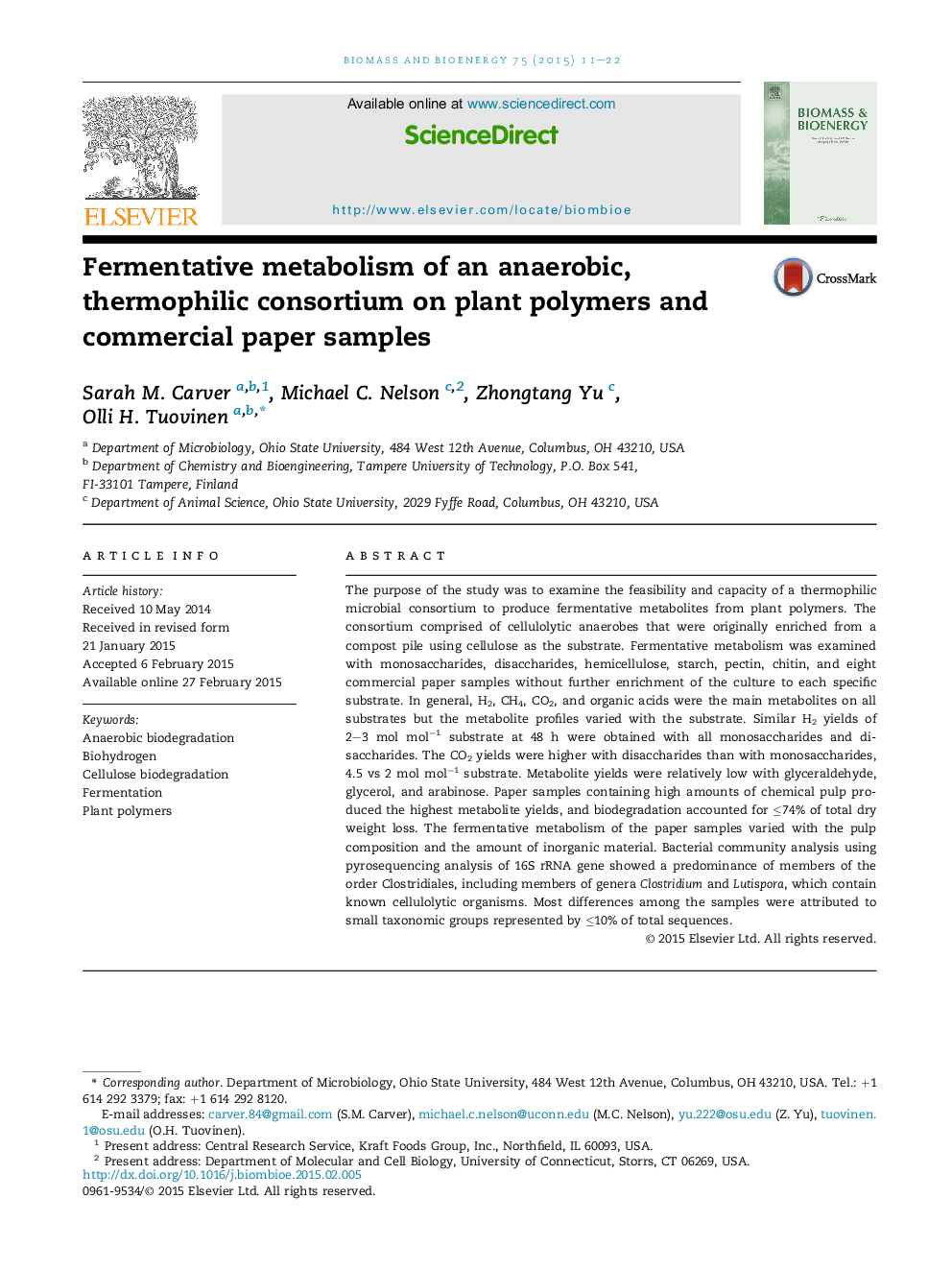| کد مقاله | کد نشریه | سال انتشار | مقاله انگلیسی | نسخه تمام متن |
|---|---|---|---|---|
| 676733 | 1459818 | 2015 | 12 صفحه PDF | دانلود رایگان |
• Plant polymers and mono- and disaccharides were tested as feedstocks for fermentation.
• A thermophilic consortium produced H2, CH4, CO2 and organic acids from the feedstocks.
• Clostridiales, especially by Clostridium and Lutispora spp., dominated the culture.
• Anaerobic digestion of commercial paper samples yielded ≤74% total dry weight loss.
The purpose of the study was to examine the feasibility and capacity of a thermophilic microbial consortium to produce fermentative metabolites from plant polymers. The consortium comprised of cellulolytic anaerobes that were originally enriched from a compost pile using cellulose as the substrate. Fermentative metabolism was examined with monosaccharides, disaccharides, hemicellulose, starch, pectin, chitin, and eight commercial paper samples without further enrichment of the culture to each specific substrate. In general, H2, CH4, CO2, and organic acids were the main metabolites on all substrates but the metabolite profiles varied with the substrate. Similar H2 yields of 2–3 mol mol−1 substrate at 48 h were obtained with all monosaccharides and disaccharides. The CO2 yields were higher with disaccharides than with monosaccharides, 4.5 vs 2 mol mol−1 substrate. Metabolite yields were relatively low with glyceraldehyde, glycerol, and arabinose. Paper samples containing high amounts of chemical pulp produced the highest metabolite yields, and biodegradation accounted for ≤74% of total dry weight loss. The fermentative metabolism of the paper samples varied with the pulp composition and the amount of inorganic material. Bacterial community analysis using pyrosequencing analysis of 16S rRNA gene showed a predominance of members of the order Clostridiales, including members of genera Clostridium and Lutispora, which contain known cellulolytic organisms. Most differences among the samples were attributed to small taxonomic groups represented by ≤10% of total sequences.
Journal: Biomass and Bioenergy - Volume 75, April 2015, Pages 11–22
